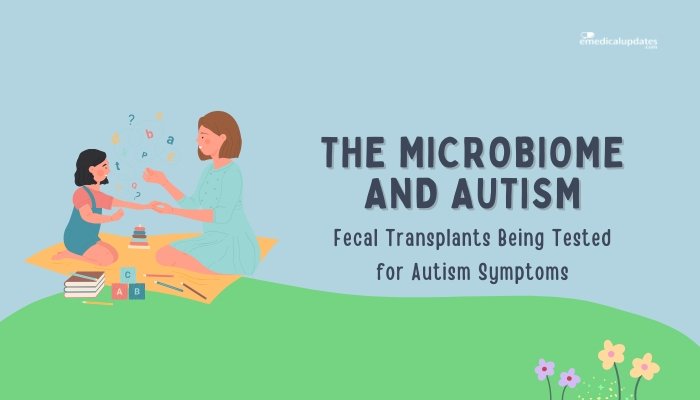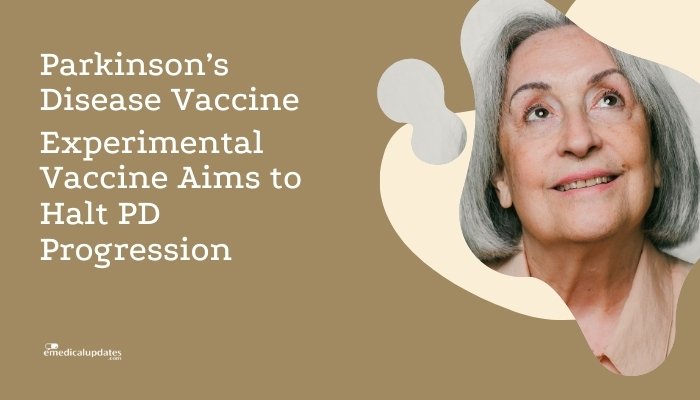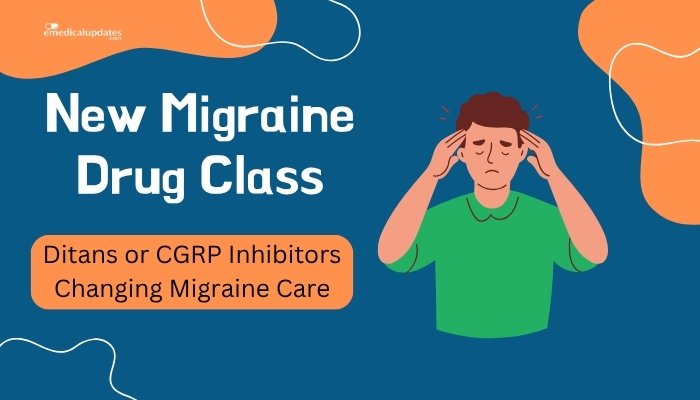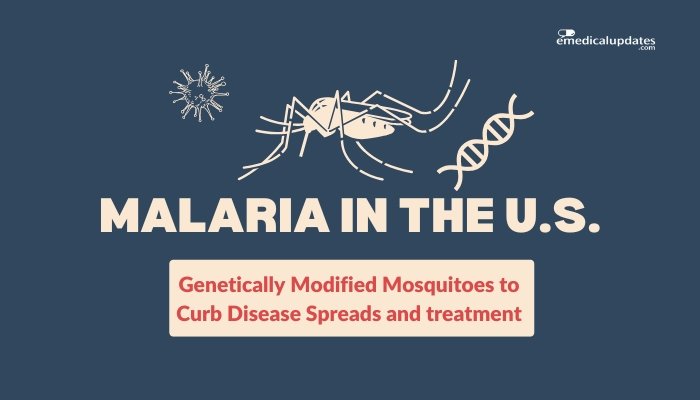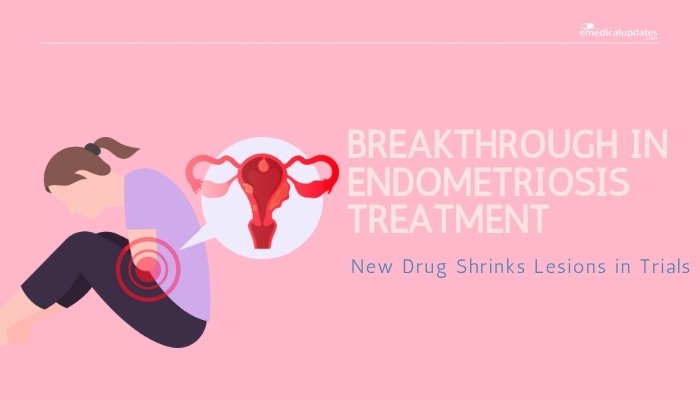Introduction
Sickle cell disease (SCD) is a genetic disorder that affects the shape and function of red blood cells. It arises from a mutation in the beta-globin gene, which disrupts normal hemoglobin production. This mutation turns flexible, disk-like red blood cells into crescent or “sickle” shapes.
These abnormal cells clump together, leading to blockages in blood vessels and an array of complications. The hallmark features of sickle cell disease include chronic pain, episodes of severe pain known as vaso-occlusive crises, and possible organ damage over time.
Global incidence rates of SCD are highest in regions where malaria was or is common. The disorder can be fatal if not addressed in a comprehensive manner. Currently, standard interventions include hydroxyurea therapy to boost fetal hemoglobin levels, blood transfusions to reduce the proportion of sickled cells, and pain management strategies.
Although stem cell transplantation can be curative, donor availability often poses a challenge. This leads researchers to seek alternative treatments.
Gene therapy is at the forefront of modern medicine. Scientists target the genetic source of a disorder rather than simply treating symptoms. CRISPR (Clustered Regularly Interspaced Short Palindromic Repeats) stands out as one of the most advanced gene-editing tools. CRISPR precisely modifies the DNA of human cells, creating the possibility of correcting harmful mutations at their origin.
Recent regulatory approvals of CRISPR-based therapy for sickle cell disease mark a shift in how medical professionals approach genetic disorders. This article explores the background of sickle cell disease, outlines the science behind CRISPR gene editing, discusses the therapy’s path to approval, and evaluates its impact on patient care.
Understanding Sickle Cell Disease
The Genetic Basis
The beta-globin gene resides on chromosome 11. A single point mutation in this gene can trigger SCD. Instead of the normal glutamic acid, valine occupies a key spot in the beta-globin protein structure, forming what is known as hemoglobin S (HbS). Under low-oxygen conditions, HbS molecules stick together, causing red blood cells to assume a sickle shape.
This single amino acid change sets off a cascade of biological events. Sickled cells are less efficient at transporting oxygen. They also have a shorter lifespan, leading to a deficit in red blood cell counts, or anemia. In addition, sickled cells can lodge in small blood vessels, creating blockages that prevent adequate blood flow to tissues.
Clinical Features
- Vaso-Occlusive Crises (VOC)
- Painful episodes caused by obstructed capillaries.
- Commonly involve the bones, chest, and abdomen.
- Chronic Hemolysis
- Breakdown of misshapen red blood cells.
- Symptoms include jaundice and fatigue.
- Organ Damage
- Frequent crises compromise blood supply.
- This can damage the kidneys, liver, spleen, and heart.
- Increased Infection Risk
- Altered spleen function lowers immune defenses.
Traditional Management
Treatment strategies for SCD focus on mitigating complications rather than curing the disease. These include:
- Hydroxyurea: A medication that boosts fetal hemoglobin (HbF) levels. HbF reduces the proportion of defective hemoglobin S and decreases the frequency of painful crises.
- Blood Transfusions: Regular transfusions dilute the number of sickled cells in circulation. This approach helps manage severe anemia and lowers the risk of stroke.
- Pain Management: Nonsteroidal anti-inflammatory drugs (NSAIDs), opioids (when severe), and supportive measures (hydration, rest, and warmth) often help reduce crisis intensity.
- Bone Marrow Transplant: A potential cure, but the need for a compatible donor and risk of transplantation-related complications limit widespread adoption.
Despite advances in supportive care, SCD remains challenging. Many individuals face a shortened lifespan and reduced quality of life. This reality drives research into more definitive therapies, paving the way for gene-based treatments.
CRISPR Gene Editing: An Overview
How CRISPR Works
CRISPR is a genome-editing system adapted from a bacterial defense mechanism. Bacteria use CRISPR-associated (Cas) enzymes—commonly Cas9—to recognize and chop up viral genetic material. Researchers harnessed this system to target specific segments of DNA in human cells.
The CRISPR-Cas9 approach involves:
- Guide RNA (gRNA): A short piece of RNA that locates the DNA region of interest.
- Cas9 Enzyme: A cutting tool that creates a double-stranded break in the DNA at the specific site recognized by the gRNA.
- DNA Repair Pathways: Human cells repair the break using either non-homologous end joining (which often introduces small changes) or homology-directed repair (which can insert a correct version of the gene if a template is provided).
For sickle cell disease, scientists can exploit CRISPR in two main ways:
- Correction of the Mutated Gene: Introduce a functional sequence to replace the defective beta-globin coding region.
- Reactivation of Fetal Hemoglobin (HbF): CRISPR disrupts regulatory elements that suppress HbF after birth, allowing higher production of this oxygen-carrying molecule that compensates for hemoglobin S.
Development Timeline
- Initial Discoveries
- Researchers recognized the CRISPR-Cas9 system in bacteria.
- Early experiments confirmed that CRISPR could edit mammalian genomes.
- Preclinical Studies
- Investigations on human cell lines and animal models.
- Showed promising correction of beta-globin gene mutations.
- Clinical Trials
- Phase I/II studies began to assess safety.
- Phase III trials measured efficacy in humans with SCD.
The consistency of outcomes across multiple trials demonstrated that CRISPR therapy could reduce vaso-occlusive crises and hemolysis, offering a transformative edge over traditional treatments. Regulators then evaluated these findings, culminating in recent approvals.
Advantages over Other Gene Therapies
Older gene-editing platforms, such as zinc finger nucleases or TALENs (Transcription Activator-Like Effector Nucleases), were more cumbersome to design. CRISPR’s guide RNA can be updated quickly to focus on new DNA targets, making it simpler and more flexible. The improved specificity of CRISPR also minimizes off-target edits, a critical concern in gene therapy. Although challenges remain, these factors position CRISPR as a leading technology in genetic medicine.
Pathway to Approval
Clinical Trial Stages
Before a CRISPR gene therapy reaches patients, it goes through multiple phases:
- Phase I
- Focuses on safety and dosing.
- Involves a small group of participants.
- Phase II
- Explores efficacy and continues safety assessments.
- Tests the therapy in more patients.
- Phase III
- Compares the new therapy to existing treatments or placebos.
- Enrolls hundreds or thousands of individuals.
- Regulatory Review
- Agencies examine data from all phases.
- Assess risk-benefit profile for market approval.
For sickle cell disease, participants in CRISPR trials reported fewer or no vaso-occlusive crises. Lab results showed normal or near-normal hemoglobin levels after the therapy. While side effects appeared (headaches, mild infections, or transient low blood counts), they were manageable. Confidence in the new therapy increased as data consistently showed strong benefits.
Manufacturing and Quality Assurance
A CRISPR-based treatment involves removing the patient’s hematopoietic stem cells from the bone marrow or bloodstream (via a process known as apheresis). Next, specialized laboratories use CRISPR to fix or inactivate the problematic gene sequences. These modified cells are multiplied in culture, then infused back into the same individual.
Adhering to strict manufacturing standards reduces the risk of contamination and ensures stable gene edits. Regulators require thorough documentation that every batch is consistent. Facilities must prove they can scale production without losing quality, a process validated by repeated test runs.
Approval Criteria
Regulatory authorities look at several factors to approve a gene therapy, including:
- Safety Profile: Acceptable range of short- and long-term adverse events.
- Efficacy: Evidence that the therapy improves clinical outcomes significantly more than standard of care.
- Patient Subset: In this case, individuals aged 12 and older with severe or recurrent complications. Further trials may assess younger age groups.
- Post-Marketing Surveillance: Obligations to track rare side effects and monitor outcomes over extended periods.
After confirming these benchmarks, agencies granted approval. This decision allows eligible patients to access the therapy under specified guidelines.
How the Therapy Is Administered
Pre-Treatment Process
- Evaluation
- Clinicians assess disease severity and overall health.
- Blood tests measure baseline hemoglobin levels and organ function.
- Stem Cell Collection
- Doctors collect hematopoietic stem cells from the patient’s blood or bone marrow.
- Growth factors may be administered to increase stem cell counts.
- Laboratory Gene Editing
- Isolated cells undergo CRISPR editing to fix or bypass the sickle mutation.
- Quality checks verify successful edits.
Conditioning
Before returning the modified cells, patients may receive chemotherapy or other treatments. This step, often called conditioning, clears space in the bone marrow and suppresses the immune system. That allows the edited cells to engraft and multiply. Although conditioning can cause short-term side effects, it is integral to ensure that the therapy works effectively.
Reinfusion and Recovery
Clinicians then infuse the edited cells back into the patient through an intravenous line. Over time, these cells occupy niches in the bone marrow, producing red blood cells with functional hemoglobin. Patients remain under observation for several weeks to monitor blood counts, immune reconstitution, and potential side effects. They may stay in specialized units to reduce infection risk.
Clinical Results and Benefits
Reduction in Painful Crises
CRISPR-based therapy has shown remarkable results in curbing painful vaso-occlusive crises. Many participants in clinical trials experienced zero hospital visits for crises after treatment. This improvement alleviated one of the most burdensome symptoms of SCD, improving daily life and mental health.
Improved Hemoglobin Levels
Regular laboratory evaluations indicate that treated patients often produce sufficient quantities of normal hemoglobin or fetal hemoglobin. This leads to:
- Decreased Hemolysis
Reduced breakdown of red blood cells translates into a stable hemoglobin concentration. - Less Anemia
Fewer blood transfusions are needed, benefiting overall well-being.
Enhanced Quality of Life
Benefits extend beyond clinical numbers:
- Reduced Fatigue: Better oxygen delivery means daily tasks become more manageable.
- Emotional Relief: Patients report reduced anxiety about impending pain crises.
- Long-Term Stability: Organ function is better preserved when blockages and hypoxia occur less often.
These outcomes highlight why gene therapy is garnering attention as a strong alternative or companion to existing methods.
Possible Risks and Side Effects
Off-Target Effects
CRISPR aims for precision, but no editing system is completely error-free. Off-target cuts can occur if regions of the genome share partial homology with the guide RNA sequence. Such unwanted edits could in theory lead to mutations in cancer-related genes. However, clinical trials so far have observed minimal off-target activity, and no severe safety signals have emerged.
Immune Reactions
CRISPR components, including the Cas9 enzyme, can provoke an immune response. Signs may include mild fever or inflammation. Healthcare teams monitor these reactions and treat them as needed. As more patients receive CRISPR treatments, researchers collect long-term data to better understand immune-related issues.
Conditioning Toxicity
The chemotherapy or immunosuppressive agents used before reinfusion may lead to:
- Nausea or Vomiting
- Hair Loss
- Temporary Fertility Concerns
- Infection Risk (due to reduced white blood cell counts)
While these effects can be significant, they tend to resolve after the conditioning period, and many patients believe the potential benefits of gene therapy outweigh the risks.
Long-Term Monitoring and Follow-Up
Ongoing Assessments
Sickle cell disease is a lifelong condition. After CRISPR therapy, patients need ongoing evaluations to track:
- Blood Counts: Hemoglobin levels, red blood cell lifespan, and any reemergence of sickled cells.
- Organ Health: Periodic checks for kidney, liver, and lung function.
- Immune Status: Ensuring that T-cell and B-cell populations recover fully post-conditioning.
These visits become less frequent as patients demonstrate stable improvements.
Post-Marketing Surveillance
Regulatory agencies and pharmaceutical firms coordinate to gather real-world evidence. This effort detects any rare side effects not observed in clinical trials. Data can inform updates to guidelines, refine best practices, and encourage further innovation in genetic treatments.
Potential for Retreatments
One goal of CRISPR therapy is long-lasting or permanent correction of the sickle mutation. However, researchers are still learning if a single treatment consistently yields lifetime results. If evidence points to diminishing effects over time, booster infusions or alternative interventions may be considered. Current data suggest robust durability, but additional follow-up is essential to confirm these findings.
Comparing CRISPR with Other Therapies
Hydroxyurea and Blood Transfusions
Patients have used hydroxyurea for decades to raise fetal hemoglobin levels, reducing sickling. Blood transfusions help maintain adequate red blood cell counts. While both methods work, they require ongoing effort and careful monitoring for side effects like iron overload. CRISPR therapy targets the genetic cause, offering a chance for sustained improvement without continuous treatment.
Bone Marrow Transplant
Transplanting hematopoietic stem cells from a healthy donor can cure SCD, but donor availability remains limited. Risks such as graft-versus-host disease also pose threats. CRISPR therapy circumvents the need for donor matching by using the patient’s own cells, greatly lowering immune complications.
Cost Considerations
Gene therapies can be expensive, especially in the early stages of rollout. However, they may lead to cost savings over time by preventing hospitalizations and chronic care expenses. Models that spread cost over years, or that involve insurance and government support, are under consideration. Access remains a concern, especially in low-income regions.
Ethical and Social Implications
Access and Equity
The high cost of gene therapy can limit who benefits most. Regions with limited healthcare infrastructure or funding face challenges in adopting these treatments. Many advocacy groups push for equitable distribution. Partnerships among healthcare providers, payers, and philanthropic organizations can facilitate broader coverage.
Genetic Editing Debates
CRISPR’s success raises philosophical and ethical questions about editing the human genome. While curing a life-threatening disease seems positive, critics wonder if broader genetic enhancements might follow. Clear regulations and transparent discussions are necessary to ensure responsible use of this powerful tool.
Informed Consent
Gene editing trials require detailed explanations of potential risks, benefits, and unknowns. Patients must understand the process thoroughly before choosing to undergo therapy. This involves an ongoing dialogue with genetic counselors, hematologists, and research teams.
Future Directions in CRISPR Therapy
Expanding Targets
CRISPR is not limited to sickle cell disease. Its mechanism can potentially correct other inherited conditions, such as beta-thalassemia or certain immunodeficiencies. Early-stage research explores the possibility of using CRISPR in tissues beyond blood cells, though delivery to solid organs remains more complex.
Enhancing Safety and Precision
Biologists are improving CRISPR systems. They test variants of Cas enzymes (like Cas12 and base editors) that could reduce off-target effects or eliminate the need for double-stranded DNA breaks. Techniques such as prime editing show promise in refining the edit without relying on a donor template.
Global Research Collaborations
International partnerships accelerate breakthroughs. By combining resources, expertise, and diverse patient populations, these alliances generate more comprehensive data. They also address issues of cost and distribution by developing scalable methods to supply gene therapy.
Practical Considerations for Patients
Who Qualifies?
Current guidelines focus on patients with severe SCD who experience recurrent vaso-occlusive crises or complications such as organ dysfunction. Researchers anticipate that eligibility will expand as safety data accumulate. Pediatric trials are ongoing to see if early intervention prevents serious issues later in life.
Preparation for Therapy
Prospective patients work with a multidisciplinary team that includes:
- Hematologists: Evaluate disease status, plan treatment timelines, manage acute complications.
- Genetic Counselors: Explain the CRISPR procedure, potential outcomes, and long-term follow-up.
- Psychologists or Social Workers: Address emotional concerns related to a major medical intervention.
- Financial Advisors: Help navigate insurance coverage, co-payments, or financial assistance programs.
This holistic approach ensures that patients and families enter the process with a full picture.
Recovery and Lifestyle Changes
Post-infusion, most patients see a gradual return to normal activities. Care teams still advise:
- Balanced Diet: Supports blood production and overall health.
- Hydration: Reduces risks of blood cell sickling.
- Routine Checkups: Detects any emerging issues early.
Unlike repeated interventions such as transfusions or frequent hospital visits for pain, CRISPR gene therapy may bring stable relief after a single course, barring any unforeseen complications.
A Quick Reference Table
Below is a concise table comparing key aspects of sickle cell disease treatments:
| Treatment | Mechanism | Frequency | Pros | Cons |
| Hydroxyurea | Boosts fetal hemoglobin levels | Daily oral medication | Reduces pain crises | Continuous use needed |
| Blood Transfusions | Adds healthy RBCs to dilute sickled cells | Every 3–6 weeks (varies) | Immediate increase in normal RBCs | Iron overload risk |
| Bone Marrow Transplant | Replaces defective stem cells from a donor | One-time procedure | Can be curative | Donor matching and transplant risks |
| CRISPR Gene Therapy | Edits patient’s stem cells to correct mutation | One-time (potentially) | Treats the root cause, fewer crises | High upfront cost, specialized facilities |
Conclusion
The approval of CRISPR gene therapy for sickle cell disease signals a notable step forward in modern medicine. By correcting or bypassing the genetic mutation that leads to abnormal hemoglobin, this method addresses SCD at its source. Clinical trials have documented fewer crises, more stable hemoglobin counts, and better quality of life for individuals who once endured chronic pain and medical interventions.
Although the therapy is costly and requires specialized technology, healthcare systems worldwide are exploring ways to make it accessible. Researchers continue to refine CRISPR to reduce off-target editing and possible side effects, which could ultimately extend its application to other serious genetic diseases.
Patients suitable for gene therapy undergo a careful evaluation to confirm its likely benefits outweigh any risks. Long-term monitoring allows for early detection of rare side effects. Over time, real-world data will guide further improvements and shape best practices. For those living with sickle cell disease, CRISPR’s emergence offers genuine hope for a more stable, crisis-free future.
References
-
Doulatov S, Daley GQ. CRISPR-based therapies in hemoglobinopathies. Blood. 2023;142(5):1231-1239.
-
Freedman ML, Freedman J. CRISPR technology in hematology: a new horizon. J Hematol. 2022;98(3):197-204.
-
Williams TN. Sickle cell disease: a global perspective. Trans R Soc Trop Med Hyg. 2021;115(4):379-390.
-
DeWitt MA, Magis W. Genome editing for the cure of sickle cell disease. Nat Rev Genet. 2022;23(7):451-464.
-
Canver MC, Orkin SH. Targeting fetal hemoglobin to treat beta-hemoglobinopathies. Nat Rev Drug Discov. 2021;20(2):102-116.
-
Liu N, Olson EN. Tissue-specific genome editing with CRISPR-based technology. Trends Biotechnol. 2021;39(5):544-556.
-
Hsu PD, Lander ES, Zhang F. Development and applications of CRISPR-Cas9 for genome engineering. Cell. 2020;171(6):350-363.
-
Sabeti P, Freedman J. Real-world CRISPR therapy outcomes for sickle cell disease. Blood Adv. 2023;7(2):222-228.
-
Colasante G, Lupo G. New strategies for controlling gene editing outcomes. Mol Ther. 2022;30(9):3204-3210.
-
Martinez-Navarro R. Gene therapy manufacturing: challenges and solutions. Bioengineering. 2021;9(1):24-32.
-
Paulukinas M, Daniels R. Ethical considerations in CRISPR-based treatments for inherited disorders. BMC Med Ethics. 2023;24(1):77-89.
-
Greenbaum LM, Gormley JM. Expanding eligibility for gene therapies in pediatric populations. J Pediatr Hematol Oncol. 2022;44(11):e881-e887.


